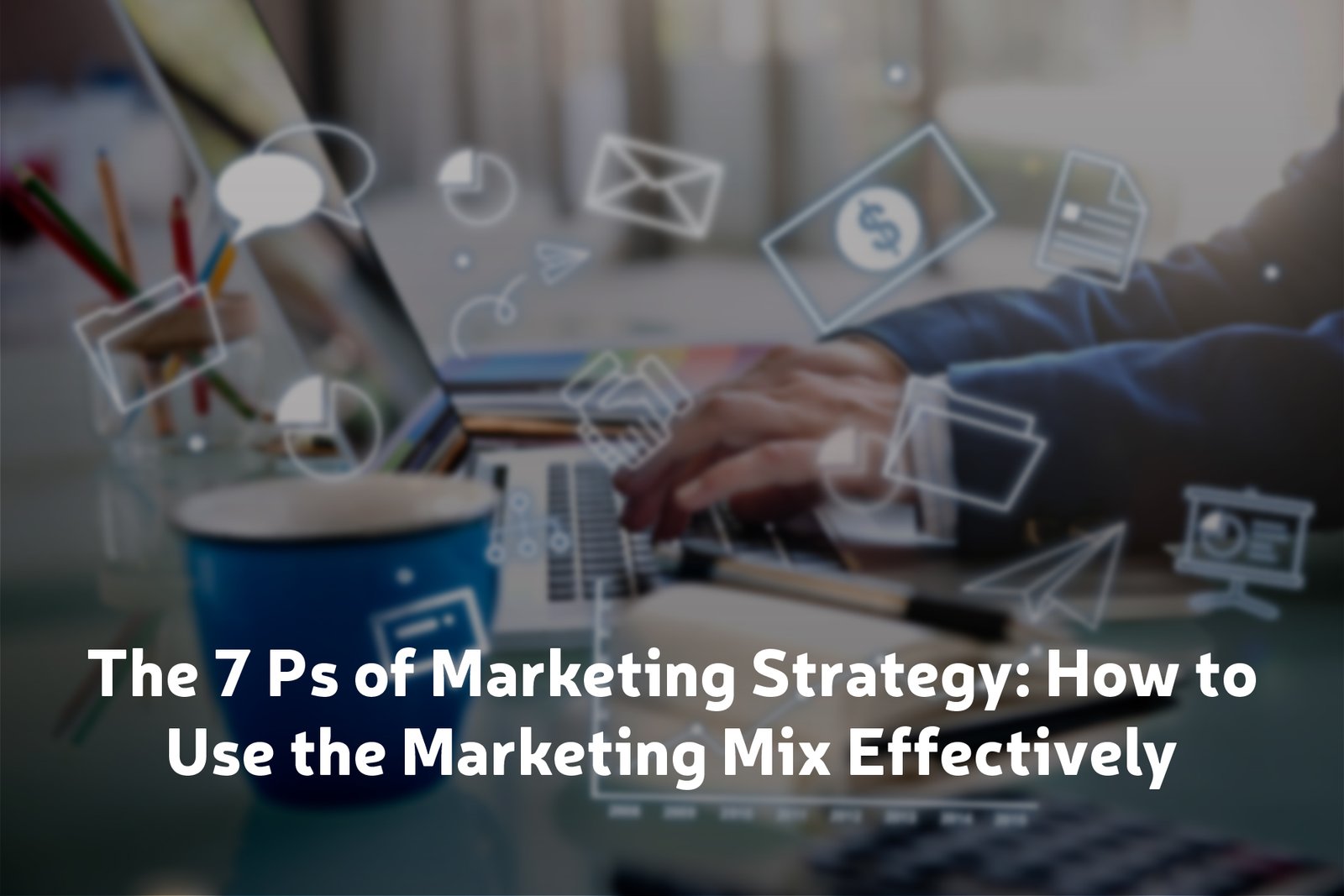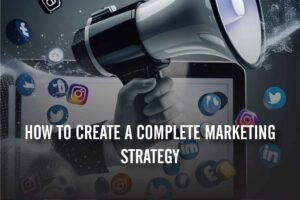Marketing can start feeling like you’re going around in circles since there are so many decisions to make on the product, the appropriate price, the intended audience, and the preferred differentiating factors from competitors. When there is confusion about direction, marketing becomes hazy and draining.
The 7 Ps of Marketing should be used for your direction. You must have heard of the earlier famous 4 Ps: Product, Price, Promotion, and Place; they were joined with the 3 Ps of People, Process, and Physical Evidence. All these seven elements are equally significant in forming a marketing plan that requires not just the promotion of a product but a strong, long-lasting relationship with the customer.
So how does one apply the 7 Ps in order to grow businesses, attract the right customers, and create differentiation? The intention of this guide is to lead you through each of these elements, why they need to be there, and some practical ways to implement them.
What Are the 7 Ps of Marketing?
The marketing mix began with 4 Ps, which includes product, price, place, and promotion. It was introduced in the book Basic Marketing: A Managerial Approach, written by Jerome McCarthy. Three more elements were later added, namely, People, Process, and Physical Evidence. These seven constituents are together termed the 7 Ps of Marketing.
The 7 Ps have been coined to cover all the components related to marketing that affect customers’ choice. It assists you in considering what you offer, how much you charge, where and how you sell it, and how your brand is seen by consumers.
Particularly on the internet, it may be difficult for small business owners or marketers to stand out, develop that USP, or find the ideal audience to approach. The 7 Ps make all this possible by offering a clear framework so that you can plan your marketing strategy.
Thinking through each P will help one in decision-making, attracting just the right kind of customers, and growing one’s enterprise. It is imperative to remember that all that makes the seven Ps must be in synchronization. Strong strategies ensure that the product meets customer needs, is fairly priced, well promoted, and smoothly delivered.
Let’s discuss each and its application in marketing
1. Product: Make Something People Want
The very essence of a business is its product element of the marketing mix. It is either a physical thing, a service, or an experience. Finding anything that responds to a need or circumstance is the goal..
- Learning about your client: You can utilize surveys, interviews, and online polls to find out what your customers value, what problems they encounter, and what they really want from a solution.
- Put Quality First: Customers are influenced by quality. Your product should deliver what the customer expects or more.
- Stay Innovative: The trends keep changing, and a good product could become obsolete due to neglect. For instance, tech companies must engage in software updates to remain relevant.
Pro Tip: For services like web development or digital marketing, support your value proposition with tangible examples, such as case studies or a portfolio.
2. Price: Make It Right
Price is not just a number; it expresses the value of the item. Too high, and people will stay away from you; too low, and they will assume your product to be of inferior quality.
- Competitive Pricing: See what your competitors are charging. Price your product accordingly.
- Value Perception: Ensure that buyers know why the item is worth the cost.
- Adaptive Strategies: Provide special offers, packages, or subscriptions to the many clientele groups you hope to reach.
You might have observed that service providers, Software companies in particular, typically have tier pricing; price options for beginners, professionals, and enterprises, so that everyone can afford the purchase.
3. Place: Make It Accessible
Place is all about how and where customers can buy your product. In the present scenario, this can be online, in a physical store, or both.
- Appropriately Choosing the Right Channels: Not all channels fit every business. If you sell handmade jewelry, marketplaces like Etsy may work best. If you sell B2B software, online demos, and LinkedIn may perform better.
- Convenience matters: More often than not, customers want easy access. Fast shipping, easy navigation on a website, and local availability matter.
- Global Opportunities: Isn’t it clear by now? No limits. Even small establishments can reach international customers using online tools.
Tip: Combining an online presence with a physical one usually works best. For example, many cafes that sell merchandise online have a physical place as well.
4. Promotion: Get the Word Out
Promotion is quite simply how people get to know about your product, be it through advertisements, social media, or email campaigns, among many others.
- Niche Targeting: knowing who you are addressing and adjusting your messages to the individual demands and interests.
- Diversify: SEO, email marketing, social media, and even the occasional traditional media channel have made significant progress in raising your profile.
- Measure and Adapt: Keep tabs on the most successful campaigns and make adjustments to the less successful ones.
As an instance, consider a small business that wishes to use Instagram advertisements to draw in younger customers while using email newsletters to stay in touch with its loyal clientele.
5. People: Your Team Matters
People aren’t just your employees; they’re everyone who interacts with your brand. That includes customer service reps, sales staff, and even the people behind your website.
- Provide Outstanding Service: A staff that is amiable, informed, and supportive can convert a one-time client into a devoted customer.
- Involve Your Group: Better service is delivered by motivated staff. Consistent training and acknowledgement are quite beneficial.
- Pay Attention to Feedback: When customers’ recommendations are carried out, they notice.
Tip: A helpful customer support team can be just as important as your product itself. Think about brands like Apple, where service enhances the experience.
6. Process: Smooth Operations Win
These are the processes through which your business will deliver its product or service. Smooth processes reassure customers and also minimize errors from time to time.
- Streamline Workflows: Identify and fix bottlenecks in service delivery. The only goal is faster and reliable service.
- Use Technology: Everything from an online booking system to order tracking needs automation tools that save time and help avoid errors.
- Ensure Consistency: In such cases, set procedures will yield a standard, predictable experience, hence, build trust.
For instance, when it comes to a fast food chain, they standardized preparation time and packaging styles across all outlets. Therefore, customers know to expect ready-for-delivery meals.
7. Physical Evidence: Show What You Stand For
Tangible proof of the quality of your product is physical evidence. It counts even for services because customers need to be reassured.
- Branding: Professionalism and trust are communicated through your logo, website, packaging, and even office design.
- Customer Testimonials: Ratings, case studies, and reviews can boost the trust that any prospective new client has in your company.
- Presentation: An organised retail establishment, neat packaging, or a well-designed website shows that someone has taken care of every tiny detail.
Tip: Even with digital businesses, visuals are crucial. Software screenshots, infographics, and behind-the-scenes footage can all be used as tangible proof.
Bringing Everything Together
The application of the marketing mix and 7Ps is not just about their continuous individual thinking, but about really making them work hand in hand. Strong products with the wrong price or poor promotion will not be successful. Every P should support each other.
For example:
- An expensive product (Price) will not sell even if it is of high quality (Product).
- A great team (People) delivering slow service (Process) causes frustration.
- All this social media activity (Promotion) on a product that you cannot even find (Place) will not convert.
Therefore, you need to align all the plan marketing mix (7 Ps) for maximum impact.
Implement The 7 Ps Of Marketing with Cognitive IT Solutions
If it is all too much for you to undertake by yourself, applying the 7 Ps of marketing can also be a real challenge. That is where an expert digital marketing partner steps in.
At Cognitive IT Solutions, we assist businesses in the implementation of the 7 Ps in the best possible manner. This includes everything from product positioning, pricing strategy, selecting appropriate promotion channels, and socializing the whole process. Our expert team also pays attention to people and customer experience while making sure that the brand’s physical evidence, like the website, design, or testimonials, align with building trust.
With the right digital marketing agency, time will be saved, mistakes will be reduced, and your marketing initiatives will reach their highest potential. Those 7 Ps of marketing you are looking for in your digital marketing solution? We at Cognitive IT Solutions can help with strategies customized for growth.
Conclusion
So you know the 7 Ps of marketing, which is not just a theory. They are one of the effective techniques you can apply to grow your business. Focus and give attention to Product, Price, Place, Promotion, People, Process, and Physical Evidence – what brings about results.
Start each of them one at a time at first, and see how much you can improve it. Eventually, the improvements will add up to a robust, synergistic strategy.
People notice everything – from your pricing to the way your staff treats them. Apply the 7 Ps accordingly, not only will those new customers flow in, but they will also keep coming back again.
Frequently Asked Questions (FAQs)
How to use the 7 Ps of marketing mix?
The 7 Ps can be used in a marketing strategy as a guideline or direction to get one’s activities on the right track. Analyze your Product, Price, Place, Promotion, People, Process, and Physical Evidence, and make sure these are aligned to pull customers to you.
How to use marketing mix effectively?
Indeed, you can start by knowing your audience pretty well first. Then, make sure all 7 Ps fit together and keep everything consistent, modifying based on what gains traction. Small changes can have a great impact.
What are the 7 Ps of marketing and its example?
The seven great “Ps” are Product, Price, Place, Promotion, People, Process, and Physical Evidence. Take a coffee shop, for instance, that has good coffee (Product), great prices (Price), a reasonably accessible location (Place), interesting and captivating social media posts (Promotion), amiable staff (People), prompt service (Procedure), and a tidy, well-known establishment (Physical Evidence).
What are the 7 steps of marketing strategy with examples?
Well, you can follow these steps:
- Set your objectives
- Learn about your market
- Know who your audience is
- Position your brand
- Plan using the 7 Ps
- Take action
- Check results and adjust
For instance, a coffee house might aim at increasing its online orders by trying out promotions and advertising on social media and using speedier delivery systems.










